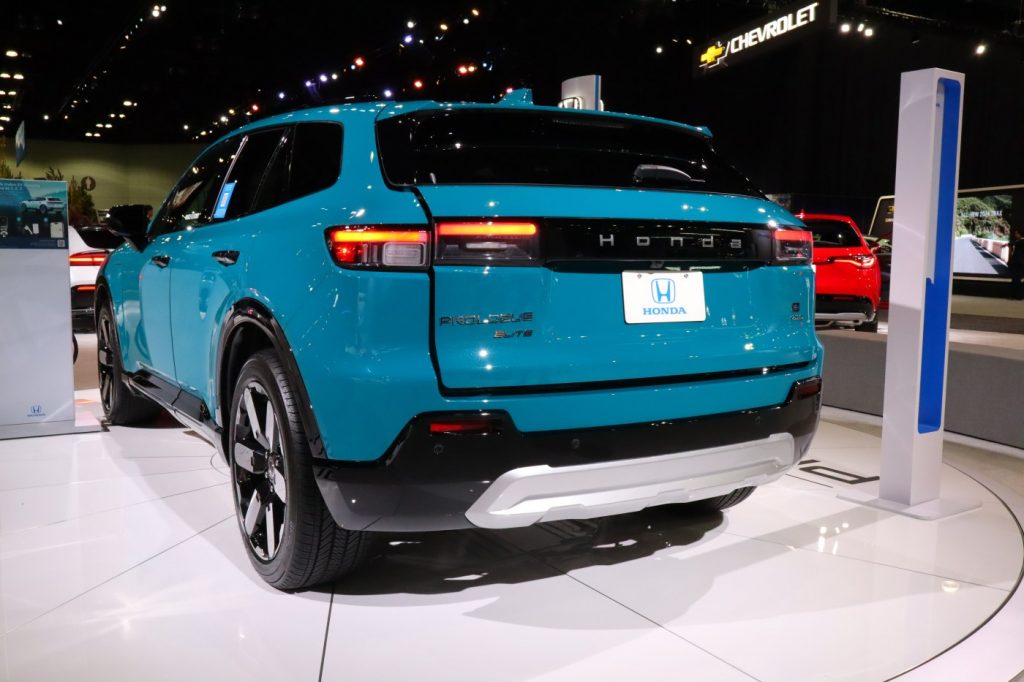The arrival of the 2024 Prologue is a welcome sight, restoring a fully electric option to Honda’s outstanding U.S. lineup. The electric version of the Clarity sedan was discontinued at the end of 2019, leaving Honda without a battery electric vehicle (BEV) for three years. The handsome Prologue is being introduced alongside a luxurious new BEV from Honda’s Acura division, the 2024 ZDX. The two all-electric SUVs mark the beginning of a robust effort by Honda to phase out its tailpipe emissions by 2040, enhancing its hard-earned reputation as one of the world’s most environmentally responsible automakers.
Unlike the electric Clarity, which originated as a hydrogen fuel cell vehicle and was also configured as a plug-in hybrid, the Prologue was designed from the ground up as a competent BEV. The Clarity had a 25.5-kWh battery pack that provided just 89 miles of range and was only practical as a local runabout. The Prologue SUV is powered by an advanced, 85 kWh Ultium battery pack developed by General Motors, and the front-wheel drive model scan venture 296 miles on a single charge. The range figure drops to 281 miles when the powertrain is upgraded to dual-motor all-wheel-drive, which increases horsepower from 212 to 288.The Prologue is reasonably efficient for an SUV of its size and shape, which are similar to the Honda Passport. The FWD models earn a combined MPGe rating of 99, while the AWDs are rated at 95. All Prologue models deliver fairly standard charging speeds, accepting 11.5 kilowatts of alternating current at Level 2 and 155 kilowatts of direct current at Level 3. Like most modern BEVs, the Prologue is designed to fully recharge at home overnight. It can also make efficient use of the more powerful public charging stations, loading the ample battery pack from 20% to 80% in as little as 35 minutes. Other than its remarkable good looks, the Prologue has no distinctive strength to give it an advantage over its BEV competitors, but it has no glaring weakness either.
Honda has been cautious about its transition to BEVs but continues to build one of the most efficient full-line fleets in the United States. The Environmental Protection Agency’s latest Automotive Trends Report ranks the real-world fuel economy of Honda’s 2022 fleet just below the first place fleet built by Hyundai. The Korean automaker took the gold medal with a fleet average MPG of 29.1 and average tailpipe carbon dioxide emissions of 302 grams per mile. Honda’s silver medal fleet was close behind with an MPG of 29.7 and emissions of 309 grams per mile.
The aptly named Prologue marks the beginning of a new era in Honda’s evolving environmental efforts. State-of-the-art BEVs will make up an increasing share of its offerings between now and 2040.The addition of two new BEVs to Honda’s lineup will help the progressive automaker maintain its extraordinary environmental record. Both the Prologue and Acura ZDX rely heavily on the Ultium platform developed by General Motors, but Honda intends to become more independent as it ramps up extensive new BEV production facilities in Ohio and nearby Ontario. Many of Honda’s loyal customers who care about tailpipe emissions have been eagerly awaiting the appearance of serious new BEVs. The Prologue has arrived, and it was worth the wait.


